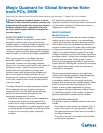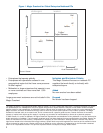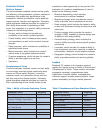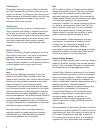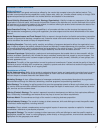
Magic Quadrant for Global Enterprise Note-
book PCs, 2H06
Gartner RAS Core Research Note G00142670, Mikako Kitagawa, Brian Gammage, 17 October 2006 R2124 06302007
Our quantitative assessments are based on
externally available financial and market data as well
as information submitted to Gartner by vendors in
response to a questionnaire.
MAGIC QUADRANT
Market Overview
Commoditization and saturation are major notebook
market trends in most regions. In a commoditized
market, price becomes the major purchase criterion,
while market saturation increases the pressure for
vendors to lower prices. But while these forces apply
to the general market for notebooks, they are less
visible in the global enterprise segment. For large-
enterprise customers, price is not usually the primary
purchase criterion. Instead, their purchase decisions
consider various criteria, including each vendor's
ability to provide appropriate levels of services and
support globally. Working with vendors that can meet
these requirements helps reduce the total cost of
ownership for notebooks.
Gartner regards global presence as a significant
criterion for evaluating potential notebook suppliers.
The leaders in this Magic Quadrant are all
international vendors that can provide consistent
products and services across multiple regions. While
smaller vendors can also play effectively in this
market, a lack of global capabilities for delivery
and/or support would put them into a Niche Players
or Challengers position. Such smaller vendors are
typically specialized in certain vertical markets.
Market Definition/Description
The global enterprise notebook market is defined as
follows:
• The products in this market are notebook PCs, in
various form factors and configurations. Mobile
thin-client terminals and PDAs are not included in
this Magic Quadrant.
• The main customers in this market fall into three
private-sector segments:
U
nlike the general notebook market, in which
price is often the main purchase criterion, the
global enterprise market also requires consistent
hardware configurations, appropriate life cycle
services, global support and fast turnaround on
warranty repairs.
WHAT YOU NEED TO KNOW
This Magic Quadrant is designed to assist global
enterprise customers with users spread across
multiple regions in selecting notebook suppliers. Our
analysis combines evaluations of the notebook
vendor attributes that matter most to large-enterprise
customers: product portfolio, geographical coverage,
financial health, and service and support capabilities.
Each vendor's position in the Magic Quadrant
accurately reflects our analysis of the factors
considered. However, we encourage notebook
buyers not to use these results as the sole criteria for
selecting a vendor. Instead, customers should
assess their own organization's priorities and
consider these when performing due diligence as
part of their vendor evaluation process.
It is not
uncommon for customers with unique requirements
to find that a lesser-known vendor is best-suited to
meet their needs.
The Magic Quadrant for global enterprise notebook
PCs is updated each year to reflect changes in
market dynamics. For the 2006 update, we have
added two new evaluation processes to our
quantitative assessment of vendors:
• Qualitative analysis of each vendor's capabilities
and processes, based on interviews with the
vendor and a range of submitted case studies
• Subjective evaluations of vendors against a range
of criteria, based on feedback from Gartner clients
to each of our user-facing client computing
analysts



